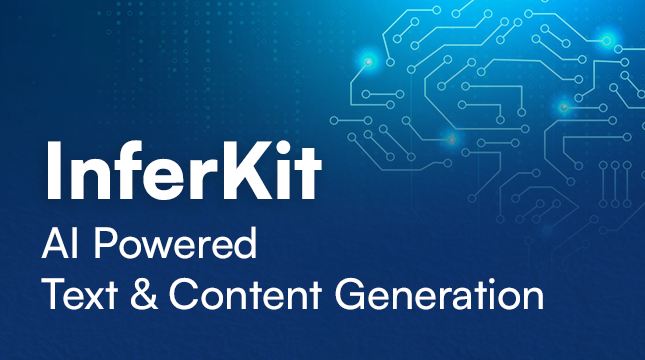This website uses cookies so that we can provide you with the best user experience possible. Cookie information is stored in your browser and performs functions such as recognising you when you return to our website and helping our team to understand which sections of the website you find most interesting and useful.
Digital Experience Management | Netizens Technologies

In today’s hyper-connected world, customers expect seamless and personalized interactions across every digital touchpoint. Whether it’s browsing your website, interacting with your social media presence, or using your mobile app, the digital experience you deliver shapes their perception of your brand. This is where Digital Experience Management Software (DXP) steps in, acting as your secret weapon for crafting exceptional customer journeys.
What is Digital Experience Management Software (DXP)?
Imagine having a central hub that empowers you to manage all aspects of your customer’s digital journey. That’s the magic of DXP. It’s a comprehensive software platform that unifies content management, personalization, analytics, and more, allowing you to orchestrate exceptional experiences across various digital touchpoints.
Understanding the Customer Journey:
Think of the customer journey as a road trip. Your website is the starting point, social media platforms are rest stops along the way, and your mobile app might be the final destination. Every touchpoint plays a role in shaping the customer’s perception. A DXP helps you ensure a smooth and enjoyable ride throughout.
Defining Digital Touchpoints:
Digital touchpoints encompass all the online interactions customers have with your brand. This includes your website, mobile app, social media channels, email marketing campaigns, and even online reviews. A DXP empowers you to deliver a cohesive and consistent experience across all these touchpoints.
Unveiling the Power of DXPs
DXPs go beyond simple content management systems. They offer a plethora of functionalities designed to elevate your digital experience game. Let’s delve into some key features:
-
Streamlining Content Management: DXPs provide a centralized platform for creating, managing, and publishing content across all your digital touchpoints. This eliminates the need for siloed content management systems and ensures consistency in branding and messaging.
-
Personalization: The Art of Tailored Experiences: DXPs allow you to personalize content and interactions based on individual customer preferences and behavior. Imagine a website that displays products a customer has previously viewed or an email campaign with targeted offers. This level of personalization fosters stronger connections and boosts engagement.
-
A/B Testing: Optimizing for Success: DXPs empower you to conduct A/B testing, where you experiment with different versions of content, layouts, and calls to action. This data-driven approach helps you identify what resonates best with your audience, leading to continuous improvement and optimization.
-
Analytics: Data-Driven Decisions: DXPs provide robust analytics tools that track user behavior across digital touchpoints. You can glean insights into what content performs well, which channels drive the most traffic, and how customers interact with your brand. This data is invaluable for making informed decisions and tailoring your digital strategy.
Unlocking the Benefits of DXPs
By implementing a DXP, you unlock a treasure trove of benefits that go beyond simply creating a fancy website. Here’s how DXPs can transform your business:
-
Enhanced Customer Engagement: DXPs enable you to personalize interactions and deliver relevant content, leading to a more engaging and satisfying customer experience. This fosters brand loyalty and builds lasting relationships.
-
Boosting Conversion Rates: Personalized experiences and optimized calls to action translate to higher conversion rates, whether it’s driving sales, encouraging sign-ups, or achieving other desired outcomes. Imagine a travel website that personalizes search results based on a user’s past travel preferences. This targeted approach is far more likely to convert a casual browser into a booking customer.
-
Building Brand Loyalty: When customers have consistently positive interactions across all your digital touchpoints, it fosters trust and loyalty. A DXP helps you create a seamless brand experience that resonates with your audience, turning them into brand advocates.
-
Improved Operational Efficiency: DXPs streamline content creation and management workflows, eliminating redundancies and saving valuable time. Additionally, data-driven insights from analytics help you identify areas for improvement and optimize your marketing efforts, leading to increased efficiency across the board.
Choosing the Right DXP for Your Business
With a plethora of DXP options available, selecting the right one for your business requires careful consideration. Here are some key factors to ponder:
-
Identifying Your Needs: Before diving into the DXP market, take a step back and assess your specific requirements. What are your business goals? What digital touchpoints do you prioritize? Identifying your needs upfront helps narrow down your DXP options and ensures you choose a platform that aligns with your overall strategy.
-
Evaluating Features and Functionality: Not all DXPs offer the same features. Make a list of functionalities critical to your business, such as robust analytics, advanced personalization tools, or seamless integrations with existing marketing platforms. Evaluate potential DXPs based on their feature set to find the best fit.
-
Scalability and Integration Considerations: Consider how your DXP needs might evolve over time. Choose a platform that scales to accommodate future growth and integrates seamlessly with your existing marketing stack. This ensures a smooth workflow and avoids data silos that can hinder your digital strategy.
-
Cost and Budget Constraints: DXPs come with varying price tags. Determine your budget upfront and shortlist options that fall within your financial constraints. Remember, the most expensive DXP isn’t always the best fit. Consider the value proposition and the return on investment (ROI) each platform offers.
The DXP Implementation Journey
Implementing a DXP isn’t a one-time event; it’s a journey. Here are some key stages to consider:
-
Planning and Strategy: This initial stage involves defining project goals, identifying stakeholders, and creating a clear implementation roadmap.
-
Content Migration and Management: Migrating existing content to the new DXP platform needs careful planning and execution. Categorizing and tagging content efficiently ensures a smooth transition and optimal searchability.
-
User Training and Adoption: For a successful DXP implementation, ensure your marketing team receives in-depth training on the platform’s features and functionalities.
-
Ongoing Optimization and Maintenance: The digital landscape constantly evolves. Regularly monitor your DXP’s performance and user behavior to identify areas for improvement. Continuously refine your content strategy, personalization tactics, and A/B testing practices to ensure optimal results.
The Future of DXPs
The DXP landscape is constantly evolving, with new features and functionalities emerging on the horizon. Here are some trends shaping the future of DXPs:
-
The Rise of Artificial Intelligence (AI): AI is poised to revolutionize DXPs by enabling even more sophisticated personalization and content creation capabilities. Imagine an AI-powered DXP that tailors website content in real-time based on a user’s browsing behavior or generates personalized product recommendations on your mobile app.
-
Personalization on Steroids: Hyper-Personalization: DXPs are moving beyond basic personalization towards hyper-personalization. This involves tailoring experiences not just based on demographics but also on a user’s past interactions, emotional state, and real-time behavior. Expect to see DXPs leverage AI and advanced analytics to deliver hyper-personalized experiences that feel eerily intuitive.
-
The Evolving Customer Journey and Emerging Touchpoints: As technology advances, new digital touchpoints will emerge. Imagine interacting with brands through voice-activated assistants or virtual reality experiences. DXPs will need to adapt and evolve to encompass these new touchpoints and deliver seamless customer experiences across the ever-expanding digital landscape.
Conclusion
In today’s digital age, a robust DXP is no longer a luxury; it’s a necessity for businesses that want to thrive. By implementing a DXP, you gain the power to craft exceptional customer journeys, personalize interactions, and make data-driven decisions that fuel business growth. Remember, the DXP is your command center for the digital landscape – use it to navigate the ever-evolving customer journey and forge lasting connections with your audience.

Let's Start Your Project
Get free consultation for your digital product idea to turn it into reality!
Get Started






